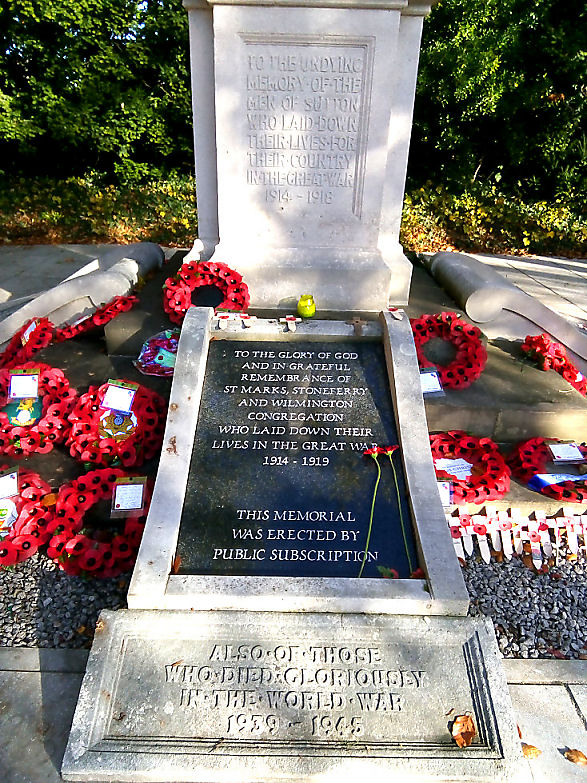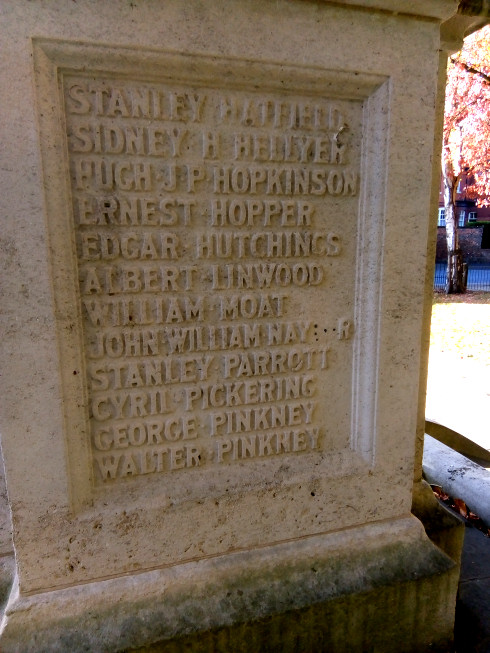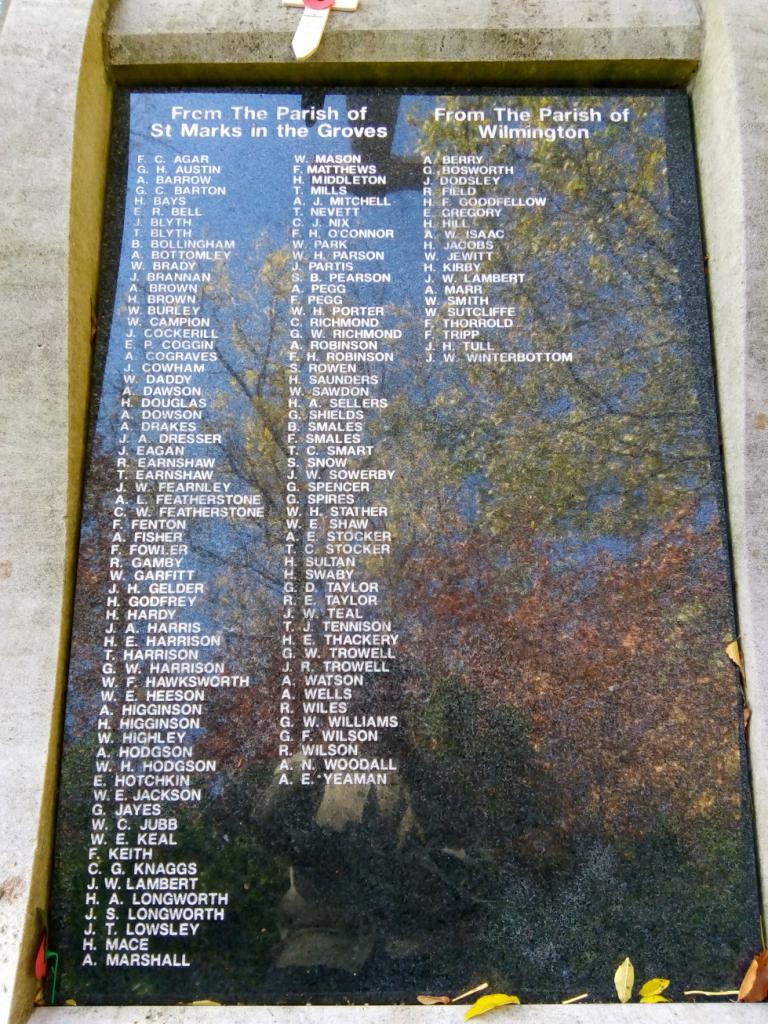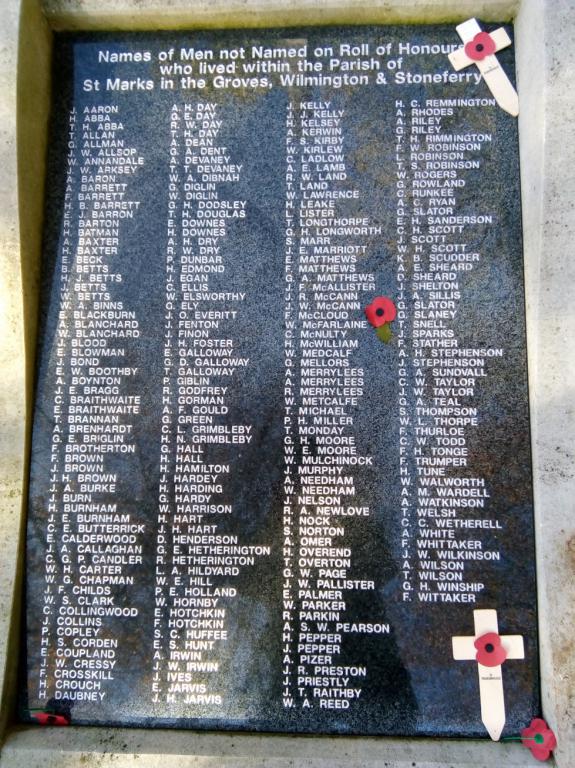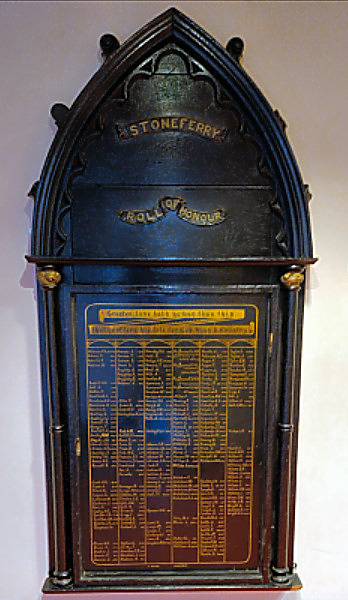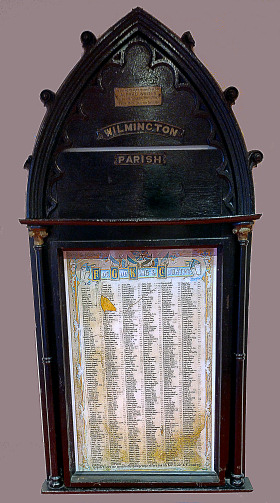 
SUTTON WAR MEMORIAL 2014-2018 a general page for these particular centenary years of remembrance
A selection of views of the 2018 Memorial, taken the next day, 12 November, are below |
TOP OF PAGE
| THE
WAR GRAVES IN SUTTON CHURCHYARD There
are in total nineteen
official war graves and
memorials in
Sutton-on-Hull
churchyard. This page
has been amended,
because as has been
pointed out, there are
three men who died
during the First War who
are buried in family
graves rather than under
the more recognisable
Commonwealth War Graves
headstones. There are
also one other family
grave, and one family
memorial containing two
names. The names of the
7 men added are in the top
panel just above
here.
 There are fourteen CWGC
headstones, of which six
are from the Great War,
and eight from the
Second World War. All
six of the GWGC Great
War graves are men not
of this local area,
though two of them were
in what may be described
as our 'local' unit, the
East Yorkshire Regiment.
The remaining four were
in other units, the
Lancashire Fusiliers,
the King's Own Yorkshire
Light Infantry, and the
Machine Gun Corps. As
far as we can tell,
sadly, there are no
surviving 'full service
records' for any of
them. So we cannot be
sure where any of them
actually came from.
There are fourteen CWGC
headstones, of which six
are from the Great War,
and eight from the
Second World War. All
six of the GWGC Great
War graves are men not
of this local area,
though two of them were
in what may be described
as our 'local' unit, the
East Yorkshire Regiment.
The remaining four were
in other units, the
Lancashire Fusiliers,
the King's Own Yorkshire
Light Infantry, and the
Machine Gun Corps. As
far as we can tell,
sadly, there are no
surviving 'full service
records' for any of
them. So we cannot be
sure where any of them
actually came from.Although they are buried here, those from 'away' are almost certainly remembered in their own home towns or villages on their own memorials, just as Sutton men are remembered on ours. Should someone recognise a name, and seeing the regiment and service number then realise it is the same man, we'd be grateful if they could let us know. Otherwise, it's a case of wait and see if, one day, any of their family contact us, from which we may glean more information. The eight men buried here from the Second World War are also mainly from away, one of them from a long, long way away. The one that served in our East Yorkshire Regiment is now known to be a Sutton man. There are one each from the Royal Engineers and Royal Artillery, two from the Royal Army Service Corps, and three from what was then the newest service of all, the Royal Air Force. Two of those, we think, were based at the local air station, RAF Sutton on Hull, which was in fact the base of a barrage balloon squadron for the provision and maintenance of the barrage balloons that protected Hull from low level air attack. It is not widely known that several RAF men were killed during Hull's blitz when manning barrage balloon sites ashore around the city, or on the barges moored in the Humber. It's even more difficult to find details on seven of these men because their Second War service records are not yet generally available to the public, only to their immediate families. But we know a good bit about the eighth, paradoxically because he was from the furthest away. He was an Australian airman, a pilot killed in the Battle of Britain, who lies in our churchyard only because he married a local girl when he was stationed in Cornwall. He died in a head-on collision between his Spitfire and a Dornier, over Surrey, and because his next of kin was now his wife of only six weeks, and she came from Sutton, his body was brought back here for burial. Otherwise, he would have been buried in Surrey, near to where he fell. We have a lot more details about him on this page, HERE. As you can see in the photo above, the City Council have now placed a notice to the churchyard gate, pointing out that there are Commonwealth War Graves inside the churchyard to the rear. You'll see the gate when in the car park in front of the Church Hall. It is hoped that folk who visit our newly refurbished memorial will also take the time to pop into the churchyard, just at the back of the memorial, and remember our 'other seventeen' servicemen, and perhaps leave a flower. Of course, Sutton folk have known of the existance of these graves all along, and it is merely an accident of geography and design that with the memorial being totally enclosed by trees and shrubs, the cemetery itself is 'hidden away' around the back. So visitors may not realise that it is there, let alone how to get into it. At first glance, the walkway up the ramp to the church hall looks as if it may be a private drive. And yes, if visiting the churchyard, you can park there. If you do, please be aware that parking is very limited, so please do park 'tidily' with consideration for others. There is another free car park just the other side of the Old School and Museum. This Google Map is now more up-to-date, with the memorial itself easily viewed even from this angle. Even so, when standing inside the memorial garden, there is little clue as to what resides behind the high brick wall at the back. Perhaps this image will help. Since this image was posted, the bus stop has been moved some distance 'behind' the camera.  The way up the side ramp to our cemetery (picture courtesy of Google Maps) A page of photos of all the war graves in our churchyard, and further web links, can be seen HERE Home Page Main War Memorial Page |
|
1938
and All That |


